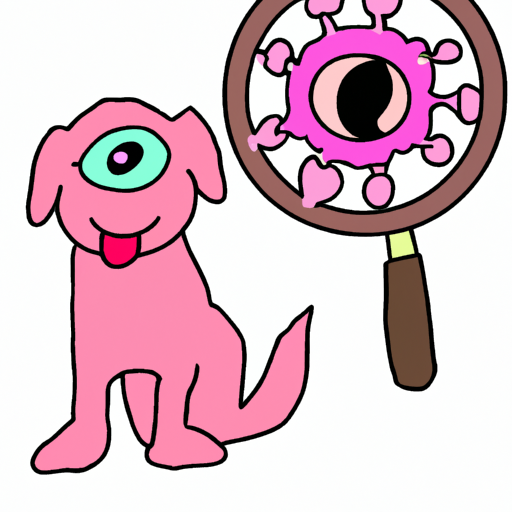As a caregiver, your dog’s health is your utmost concern. You’ve probably noticed that your dog’s eyes are a reliable indicator of their overall health. So, when their eyes turn pink, it’s no wonder you’re keen to investigate. In this comprehensive guide, we’ll explore the causes of “pink eye” in dogs, also known as ‘conjunctivitis’.
Understanding Conjunctivitis in Dogs
Conjunctivitis is an inflammation of the conjunctiva, the tissue that lines the inside of your dog’s eyelids and coats their eyeball. When your dog has conjunctivitis, their eyes may appear red or pink, hence the term “pink eye”.
Symptoms of Conjunctivitis
While the pink or red coloration is the most noticeable symptom, there are others to look out for:
- Swollen, red eyes
- Excessive blinking
- Squinting or apparent discomfort
- Discharge from the eye (clear, yellow, or green)
- Pawing or rubbing at the eye
Causes of Conjunctivitis in Dogs
Conjunctivitis can be caused by several factors, each of which we’ll examine in detail.
1. Allergies
Allergies are one of the most common causes of conjunctivitis in dogs. These can be triggered by:
- Environmental allergens, such as pollen, dust, or mold
- Irritants, such as smoke or certain shampoos
- Food allergies
2. Trauma or injury
If your dog has suffered an injury to their eye, or if a foreign body (like a grass seed) has gotten into the eye, this can lead to conjunctivitis.
3. Infections
Bacterial or viral infections can also cause conjunctivitis. This is often accompanied by other symptoms, such as a runny nose or coughing.
4. Breed-specific conditions
Certain breeds are more prone to conjunctivitis due to their physical characteristics. For example, brachycephalic breeds (those with short noses and flat faces) often have protruding eyes that are more exposed to irritants.
5. Underlying health conditions
In some cases, conjunctivitis can be a symptom of a more serious health issue, such as glaucoma or dry eye.
Treatments for Conjunctivitis in Dogs
Treatment for conjunctivitis will depend on the underlying cause. Your vet may prescribe:
- Antibiotics, for bacterial infections
- Steroids, to reduce inflammation
- Antihistamines, for allergies
- Eye drops or ointments, to soothe and protect the eye
- Dietary changes, if food allergies are suspected
Preventing Conjunctivitis in Dogs
Prevention is always better than cure. Here are some steps you can take to protect your dog’s eyes:
- Regular grooming to keep hair away from the eyes
- Keeping your dog’s living environment clean and free from dust and mold
- Using hypoallergenic shampoos and cleaning products
- Regular vet check-ups to catch any potential health issues early
FAQs
What is the conjunctiva?
The conjunctiva is a clear mucous membrane that covers the inside of your dog’s eyelids and the whites of their eyes.
Can conjunctivitis in dogs be cured?
Yes, with appropriate treatment, conjunctivitis can be fully cured. However, it’s important to address the underlying cause to prevent recurrence.
How can I tell if my dog has conjunctivitis?
If your dog’s eyes are red or pink, or if they are blinking excessively, squinting, or have discharge from their eyes, they may have conjunctivitis. It’s best to consult your vet if you notice these symptoms.
Can I catch conjunctivitis from my dog?
Most types of conjunctivitis in dogs are not contagious to humans. However, if the cause is a bacterial or viral infection, there is a small risk of transmission.
Can conjunctivitis in dogs be prevented?
While not all cases of conjunctivitis can be prevented, you can reduce your dog’s risk by keeping their eyes clean, reducing exposure to irritants, and maintaining regular vet check-ups.
In conclusion, as a caregiver to your furry friend, understanding the causes, symptoms, treatments, and preventative measures for conjunctivitis is crucial. Always consult your vet if you have concerns about your dog’s eye health.



